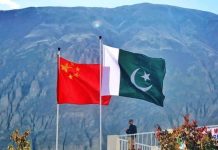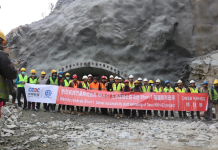BEIJING: With the Mid-Autumn Festival – one of the most important family reunion occasions for Chinese people – just around the corner, China’s space heroes are also coming home.
With a crew of three taikonauts, Shenzhou-12 manned spacecraft successfully separated with China’s Tianhe space station core module on Thursday morning, before its planned return to Earth on Friday. Having lived and worked in orbit for 90 days, the crew has set a new record of longest space stay in a single flight for Chinese astronauts.
Before the separation, the crew completed a range of tasks including transmitting experiment data back to Earth in addition to sorting and transferring of goods which are to remain in orbit, with the help of technicians on the ground, the Global Times learned from the China Manned Space Agency (CMSA) on Thursday.
Before the taikonauts left their space villa, they had to pack all equipment and attach it to the cabin to prevent it from creating damage if left unrestrained.
They also transferred all supplies and equipment inside the Tianzhou-2 cargo spaceship into the Tianhe core cabin, as the Tianzhou-2 will soon detach with Tianhe.
Following the separation, Shenzhou-12 crew had another important task to complete – verification of vertical rendezvous and docking technology. Shenzhou-12 is expected to go around the Tianhe core module and make a U-turn to fly to the back and below of Tianhe, before it raises its head and uplifts itself into an upright position vertical to the space station, state broadcaster China Central Television (CCTV) reported on Thursday.
According to the CMSA, the Shenzhou-12 manned spacecraft managed to pull off the feat as of 1:38 pm on Thursday, laying the ground for follow-up Shenzhou-13 manned flight mission.
“Vertical docking is a very challenging task that only the Shenzhou manned spacecraft series can complete,” CCTV reported. “So that’s why the Shenzhou-12 needs to sort things out in advance.”
The returned capsule of the Shenzohu-12 craft is expected to touch down in the designated Dongfeng landing site that is adjacent to the Jiuquan Satellite Launch Center in the Gobi Desert in North China’s Inner Mongolia Autonomous Region. The Jiuquan center is also where the manned mission started on June 17. The CMSA updated later on Thursday that the Shenzhou-12 will return to Earth on Friday.
Mission insiders explained that the Dongfeng site usually serves as a backup landing site to the traditional Siziwang Banner site.
– The Daily Mail-Global Times News exchange item






